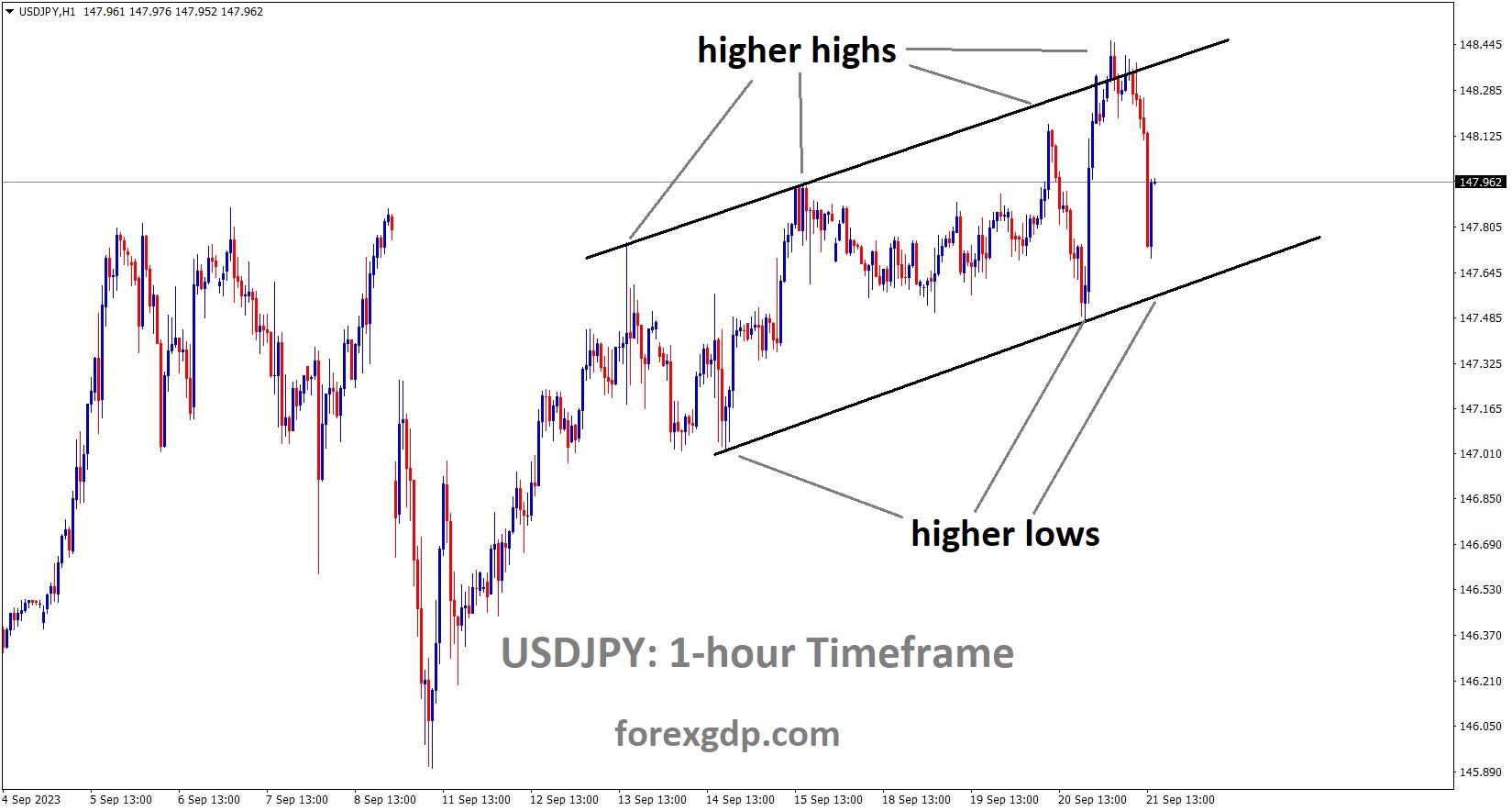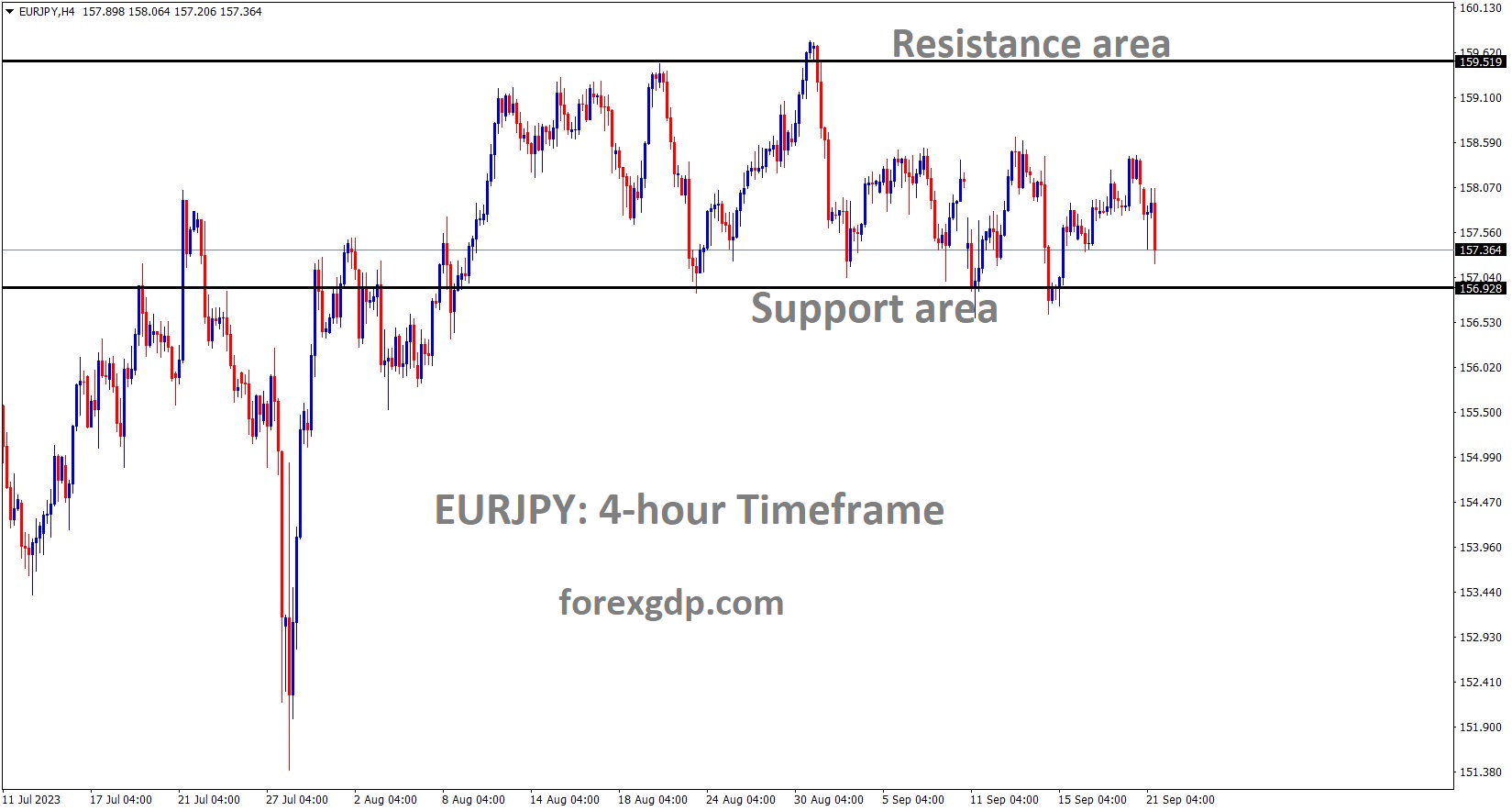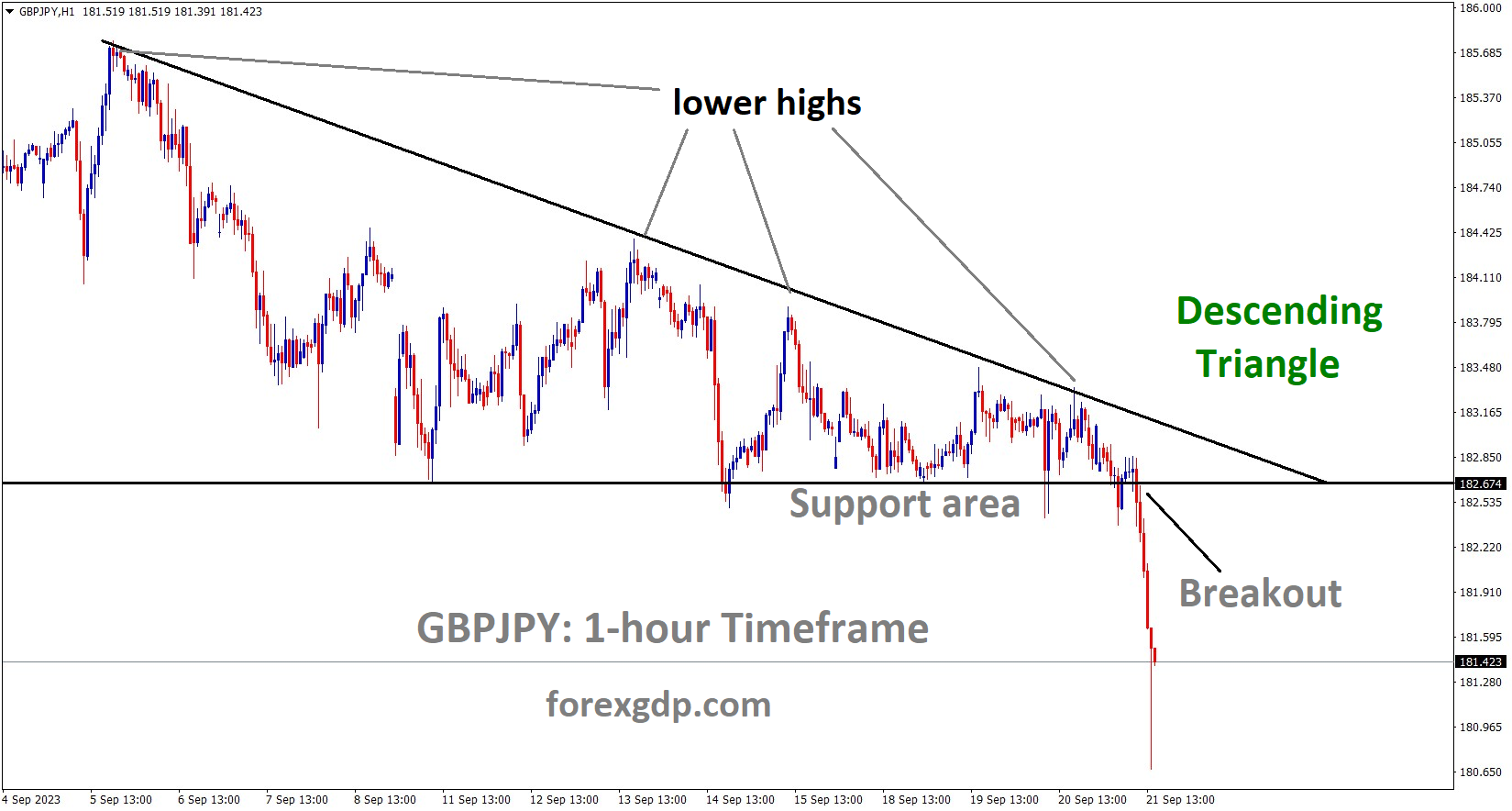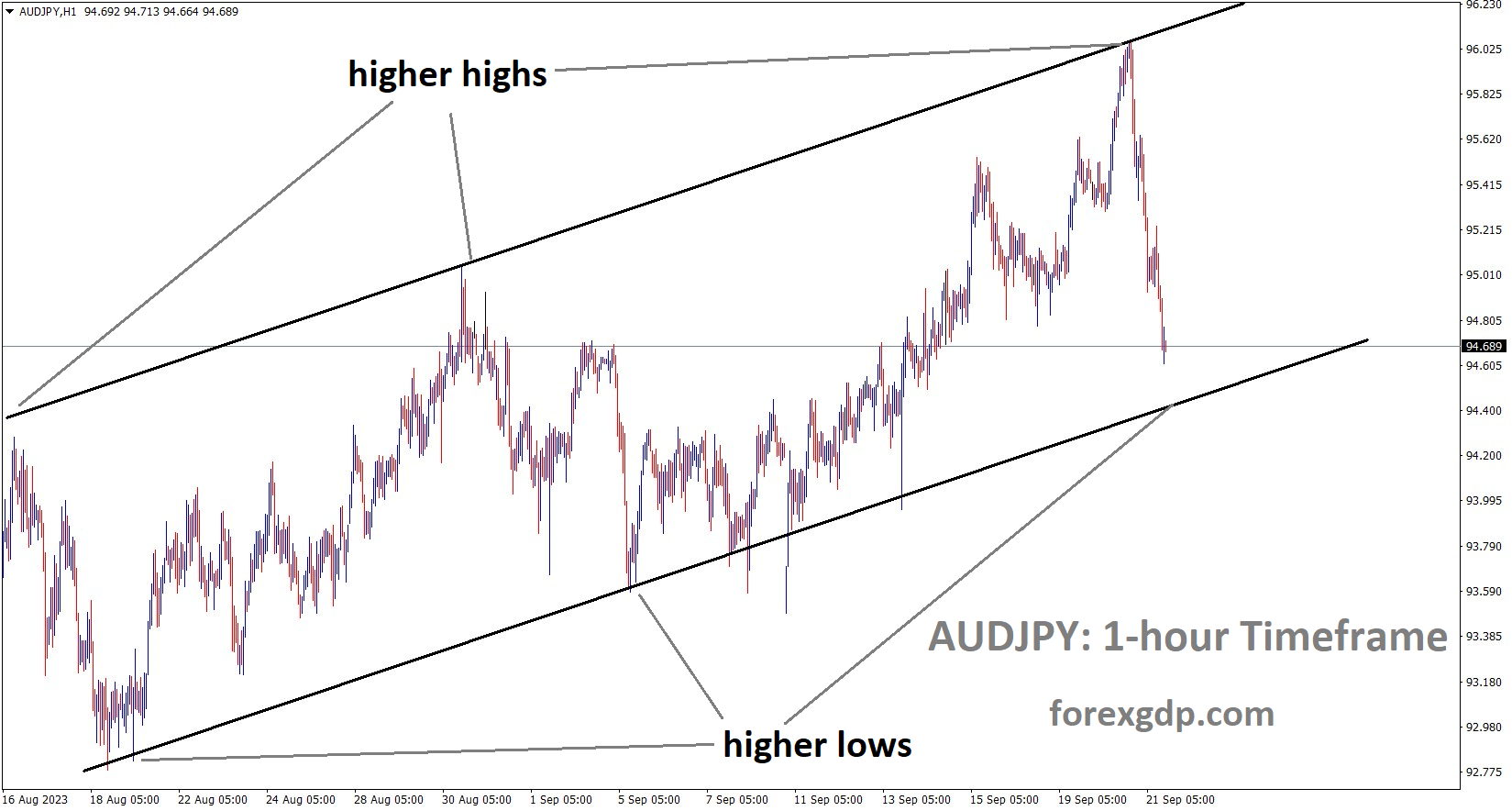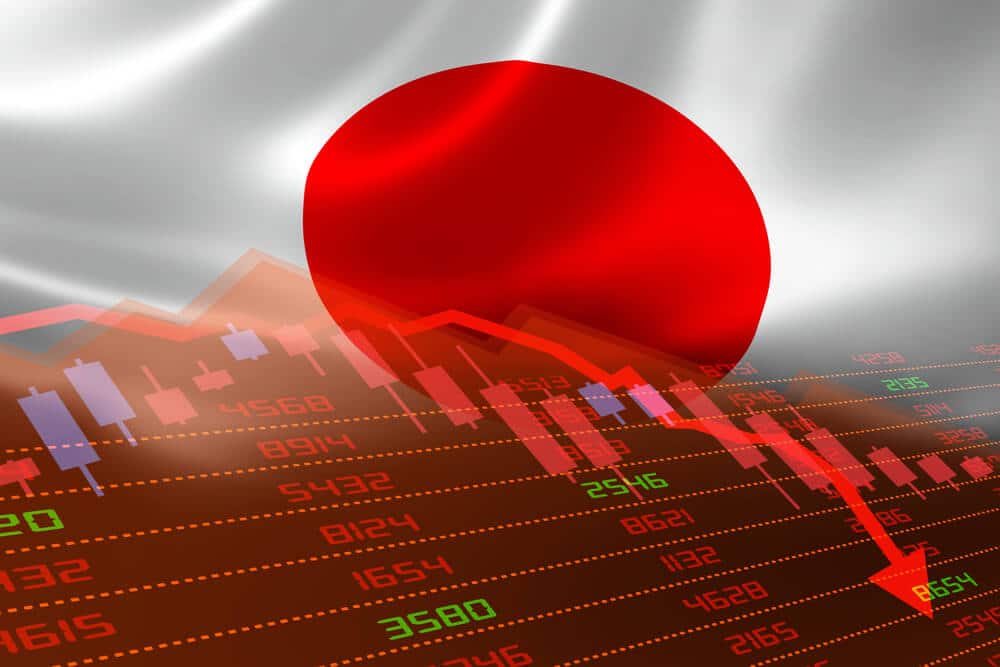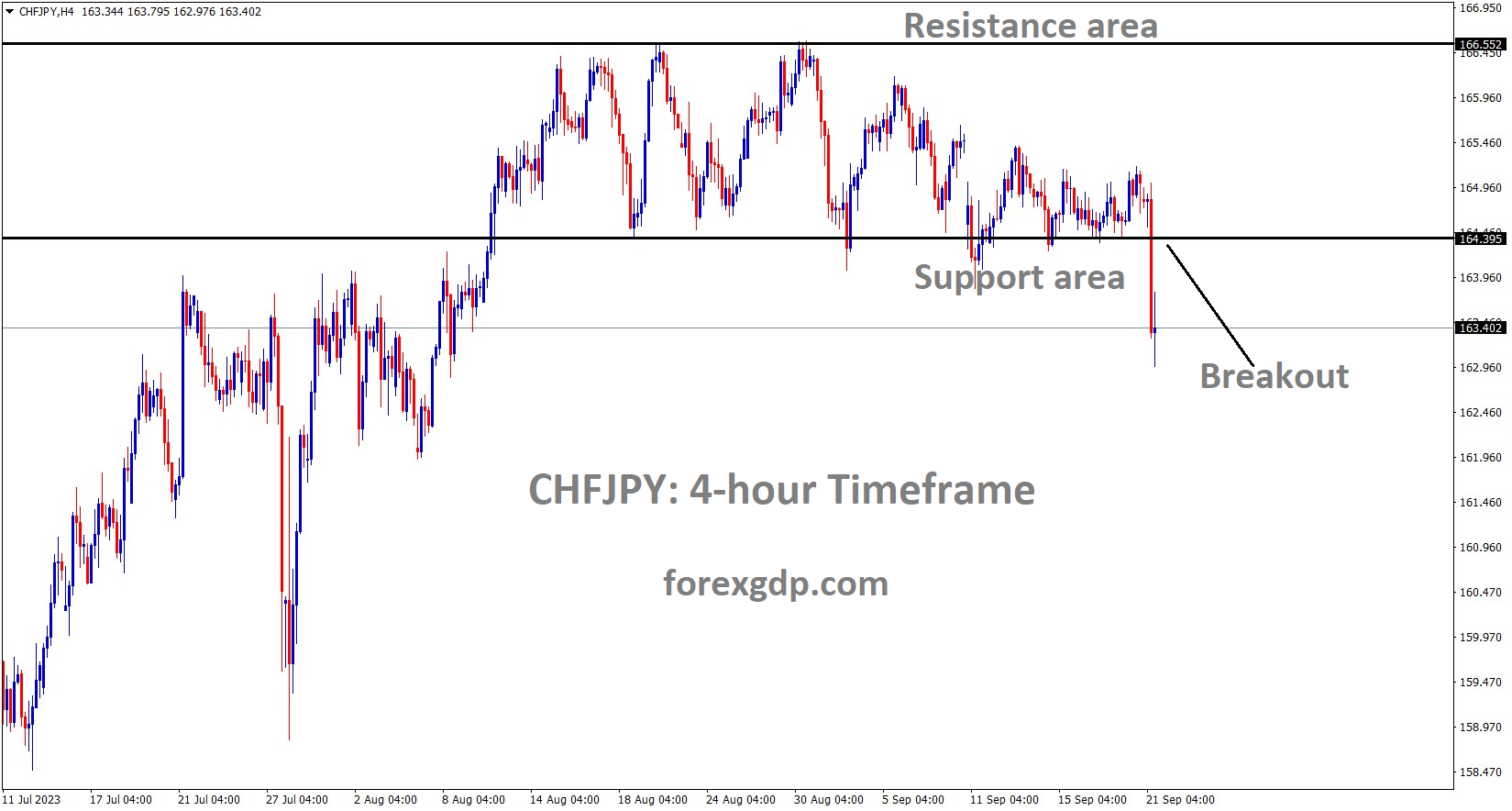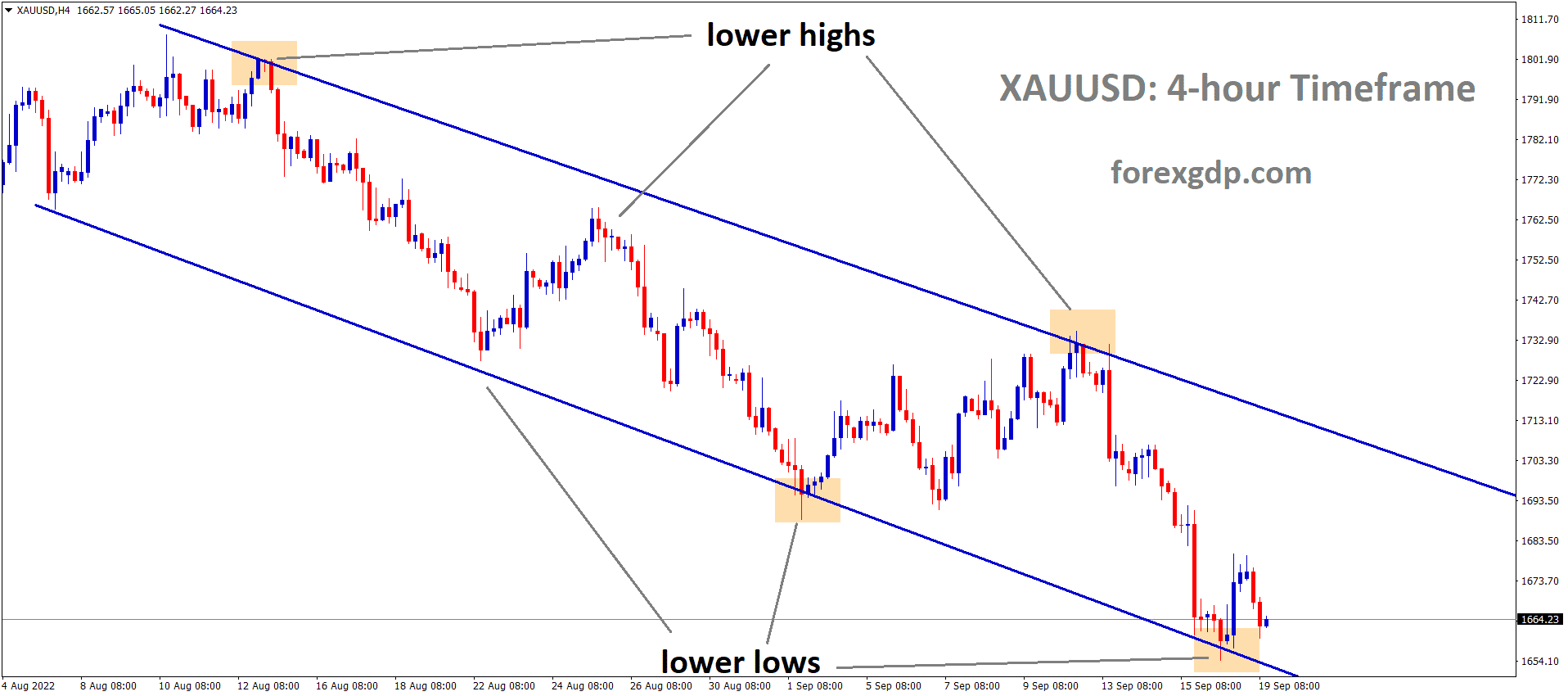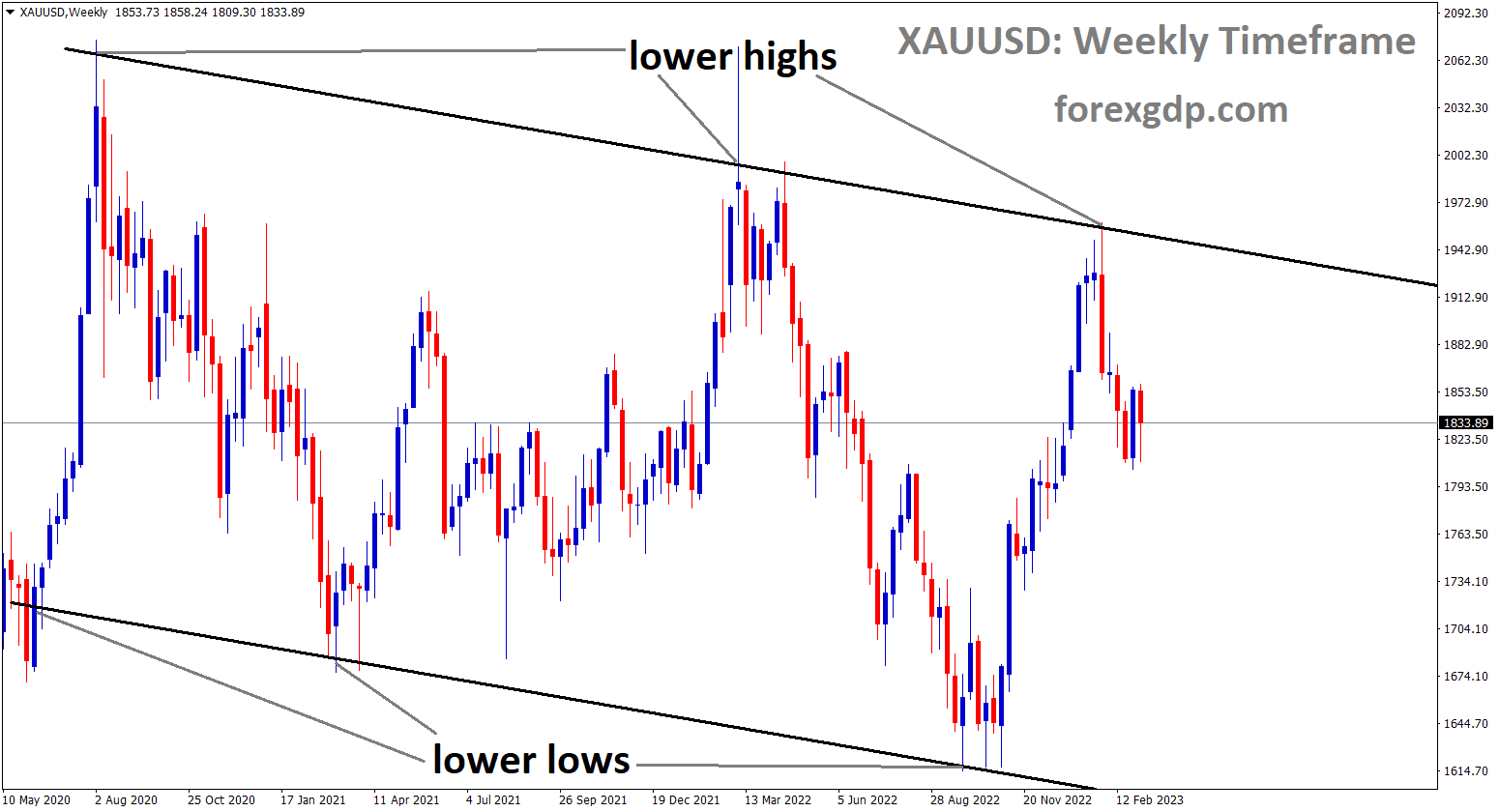USDJPY is moving in an Ascending channel and the market has reached the higher low area of the channel
The global economic landscape is marked by uncertainty and complexity, with central banks playing a crucial role in shaping the direction of financial markets and economies. The upcoming Bank of Japan policy meeting is a focal point in this intricate web of economic factors, with significant implications for both Japan and the broader global economy. In this comprehensive analysis, we will delve into various topics, ranging from the BOJ’s expected policy stance to the impact of rising oil prices and the U.S. Federal Reserve’s approach to interest rates.
Bank of Japan Expected to Maintain Current Rates

The BOJ’s monetary policy decisions have far-reaching consequences for Japan’s economic trajectory and its position in the global financial landscape. In the face of persistently low inflation and sluggish wage growth, the BOJ is expected to keep its key interest rates unchanged at -0.10% and maintain the 10-year bond rate at +/- 0.50% as part of its Yield Curve Control (YCC) strategy.
One of the central bank’s key goals is to achieve a sustainable level of inflation, ideally around 2%. However, despite years of unconventional monetary policies, including negative interest rates, Japan has struggled to meet this target. Consequently, any significant policy changes, such as rate hikes, are unlikely in the current economic environment. The BOJ’s cautious approach reflects its commitment to supporting economic growth and inflation expectations.
Market Sentiments Ahead of the BOJ Meeting
Leading up to the BOJ meeting, global financial markets are exhibiting signs of caution and volatility. Economic indicators released in the run-up to the meeting have painted a mixed picture, adding to the uncertainty surrounding the central bank’s policy stance.
EURJPY is moving in the box pattern and the market has reached the support area of the pattern
The Empire State Manufacturing Index, a key gauge of economic activity in the United States, improved significantly in August, indicating a potential rebound in manufacturing activity. This positive development surpassed market expectations and provided a glimmer of hope for the global economy.
Industrial production also showed modest growth, with a 0.4% month-on-month increase in August, albeit down from 1% in the previous month. This suggests that the manufacturing sector may be regaining some momentum, albeit at a slower pace.
However, not all indicators are pointing in a positive direction. The preliminary Consumer Sentiment Index for September fell from 69.1 to 67.7, according to the University of Michigan’s survey. This decline in consumer sentiment can be attributed to various factors, including concerns about rising prices, economic uncertainty, and the ongoing impact of the COVID-19 pandemic.
Furthermore, the five-year Consumer Inflation Expectation came in at 2.7%, down from 3% in the previous reading. This indicates that consumers may be anticipating lower inflation in the near term, which could affect their spending behavior.
Yen’s Response to BOJ Speculations
The performance of the Japanese yen in the foreign exchange market is closely tied to speculations and expectations regarding the BOJ’s monetary policy. Governor Kazuo Ueda’s recent hints at a potential departure from ultra-loose policy sparked significant fluctuations in the yen’s value.
Within just one week following Ueda’s comments, the yen depreciated by 1.3%, exacerbating its losses for the year, which had already surpassed 11%. This heightened volatility underscores the importance of the BOJ’s policy decisions in shaping the currency’s value.
The yen’s response to BOJ speculations is indicative of the broader market’s perception of Japan’s economic outlook. The uncertainty surrounding the central bank’s actions in response to economic conditions has left the yen vulnerable to fluctuations against its global counterparts.
Impact on Global Markets
The BOJ’s policy decisions have ripple effects that extend well beyond Japan’s borders. The direction of the yen, in particular, can significantly impact the broader currency landscape, affecting international trade and investment.
Investors worldwide are closely watching for any signals of policy tightening by the BOJ. Given the divergence in economic growth and yields among major economies, the central bank’s actions carry substantial weight in the global financial system. The recent strength of the U.S. dollar against the euro and sterling, for instance, highlights the interconnectedness of global markets and the importance of these developments.
The BOJ’s stance on monetary policy can also influence broader market sentiment. As investors seek opportunities in different currencies and assets, they take into account the potential impact of central bank decisions on interest rate differentials and currency values.
Global Economic Factors at Play
GBPJPY has broken the Descending triangle pattern in downside
While the BOJ meeting is a focal point, several other global economic factors are simultaneously contributing to market dynamics. These factors not only influence the BOJ’s decision-making process but also have broader implications for the global economic outlook.
The Bank of England, for example, is expected to continue its interest rate hike trajectory, reflecting concerns about a cooling economy. These actions underscore the delicate balance central banks are trying to strike between stimulating growth and managing inflation.
Moreover, rising oil prices are adding a layer of complexity to central banks’ growth-inflation dilemmas. Oil’s recent surge, driven by supply constraints and optimism about Chinese demand, has raised concerns about its potential impact on global consumption and inflation.
U.S. Federal Reserve’s Stance on Rates

The approach of the U.S. Federal Reserve to interest rates is a critical driver of market sentiment and global economic stability. Despite a strong U.S. economy, the Fed has maintained higher rates to combat inflation, raising concerns about their impact on consumers and businesses.
Analysts and investors are closely monitoring the Fed’s statements and actions. While the market has already priced in a rate hike for the upcoming policy meeting, the possibility of additional rate hikes in the future remains a topic of discussion. The Fed’s decisions are unlikely to be taken lightly, given the potential ramifications for both domestic and international markets.
Oil Prices and Their Global Ramifications
Rising oil prices have emerged as a significant factor in central banks’ deliberations regarding economic growth and inflation. The recent surge in oil prices has several drivers, including supply constraints and optimism around Chinese demand. Brent crude futures, a global benchmark, reached a 10-month high above $93 a barrel.
AUDJPY is moving in an ascending channel and the market has reached the higher low area of the channel
The implications of higher oil prices are twofold. First, they act as a tax on consumption, impacting households and businesses by increasing the cost of energy and transportation. Second, rising oil prices can contribute to inflationary pressures, which central banks must carefully manage.
Global Market Reactions
The confluence of these economic factors has led to specific reactions in global financial markets. Equities have experienced periods of volatility, with markets sliding and bond yields reaching multi-year highs. Investors and traders are navigating the uncertainties surrounding central bank policies, especially the Fed’s commitment to higher rates.
The resilience of the U.S. economy and key inflation data have partially offset concerns about the impact of higher rates. Nevertheless, market participants remain vigilant, closely monitoring economic indicators and central bank announcements for potential signals of future policy actions.
Future Rate Expectations
Market expectations suggest that the U.S. Federal Reserve is likely to maintain interest rates above 5% until late July 2024. This projection reflects the central bank’s commitment to addressing inflation, which has consistently exceeded its 2% target. The prospect of rate cuts, despite market wishes, remains contingent on significant improvements in inflation trends.
The Fed’s stance on rates is crucial not only for domestic economic stability but also for global financial markets. The interconnectedness of the global economy means that changes in U.S. interest rates can have far-reaching consequences for international trade, investment, and financial stability.
International Impact of Central Banks
Central banks worldwide are grappling with the delicate balance between stimulating economic growth and controlling inflation. Each central bank’s decisions, whether it be the BOJ’s cautious approach or the Bank of England’s interest rate hikes, have profound effects on their respective currencies and global markets. For instance, the recent weakening of the Swedish crown against the euro, just days before an expected rate hike by the Riksbank, underscores the impact of central bank decisions on currency values.
Currency Market Movements
CHFJPY has broken the Box pattern in downside
Currency markets are a reflection of the intricate interplay between economic data, central bank policies, and market sentiment. The U.S. dollar, a dominant global reserve currency, has experienced fluctuations, influenced by both domestic economic factors and global central bank decisions.
The euro, which is closely watched as the second most traded currency globally, has seen significant shifts in response to signals from the European Central Bank (ECB). The ECB’s indications that its rate hikes could be coming to an end have contributed to euro depreciation.
The Japanese yen, as mentioned earlier, is particularly sensitive to BOJ speculations and has been subject to heightened volatility in response to Governor Ueda’s comments.
Commodity Prices and Safe Havens
Commodities, including oil and gold, are sensitive to changes in global economic conditions. Rising oil prices, in particular, can act as a tax on consumption, impacting economic growth. Historically, most economic downturns since the 1970s have followed an oil shock, often characterized by a doubling of oil prices.
Gold, considered a traditional safe-haven asset, has seen price gains amid market uncertainties. Investors often turn to gold as a store of value during times of economic and financial instability.
In conclusion, the Bank of Japan’s policy meeting serves as a crucial pivot point in the complex and interconnected global economic landscape. Central banks worldwide are navigating a challenging environment characterized by low inflation, rising oil prices, and the need to strike a balance between supporting economic growth and managing inflation. The decisions made by central banks reverberate throughout the international financial system, impacting currencies, commodities, and market sentiment. As we move forward, the world will continue to closely monitor these developments and their ramifications for the global economy.
Don’t trade all the time, trade forex only at the confirmed trade setups.
Get more confirmed trade setups here: forexgdp.com/buy/

